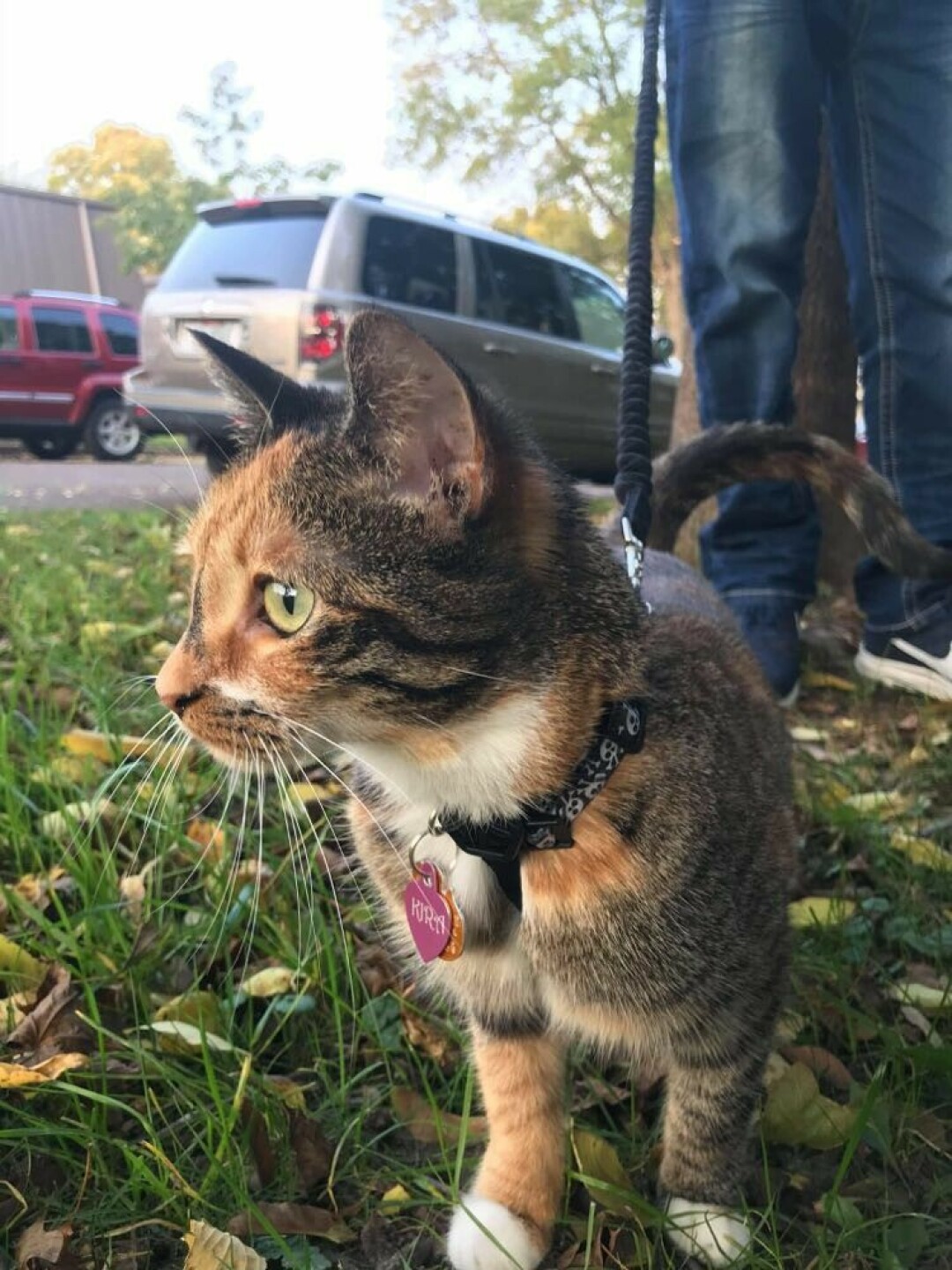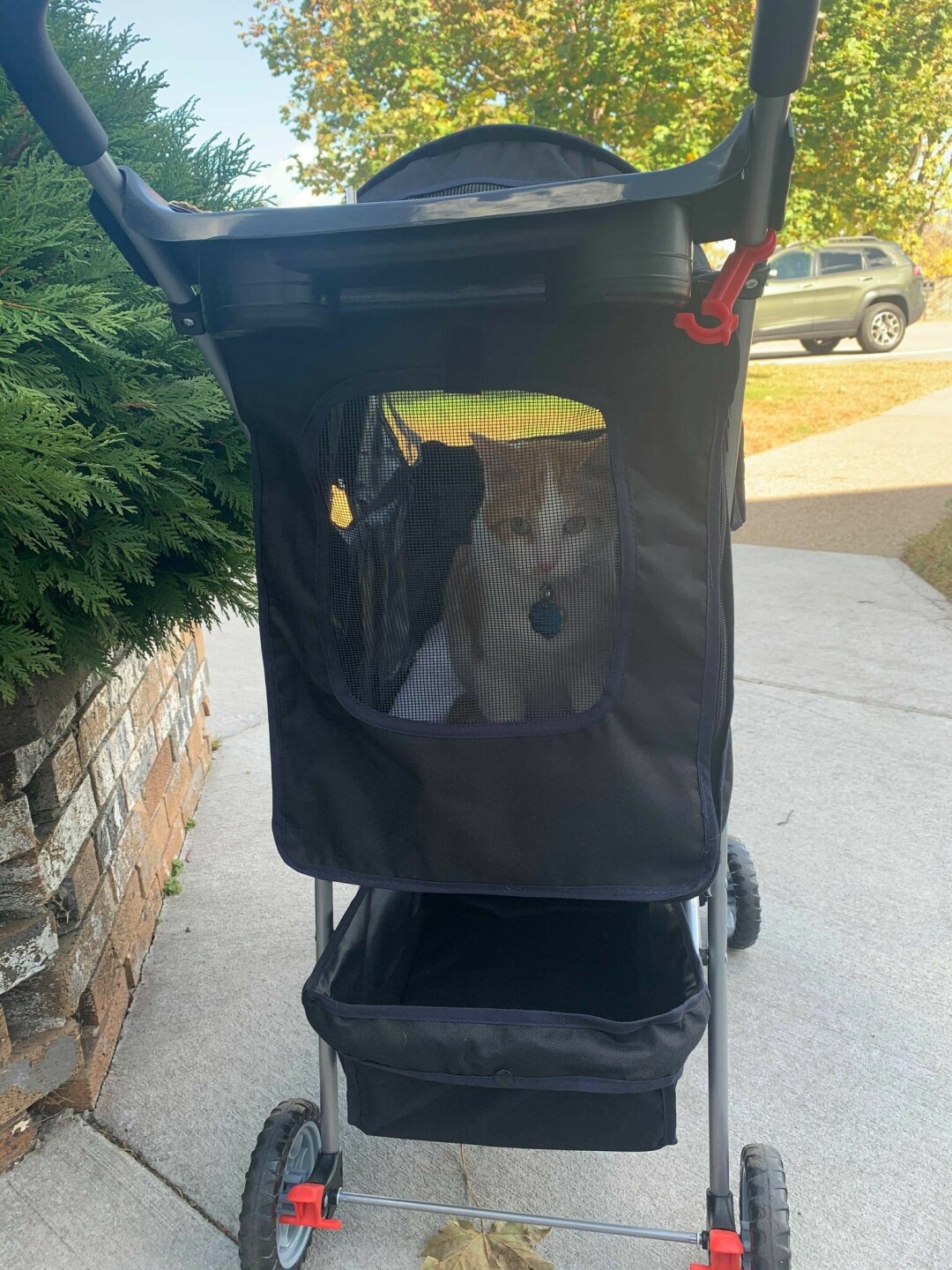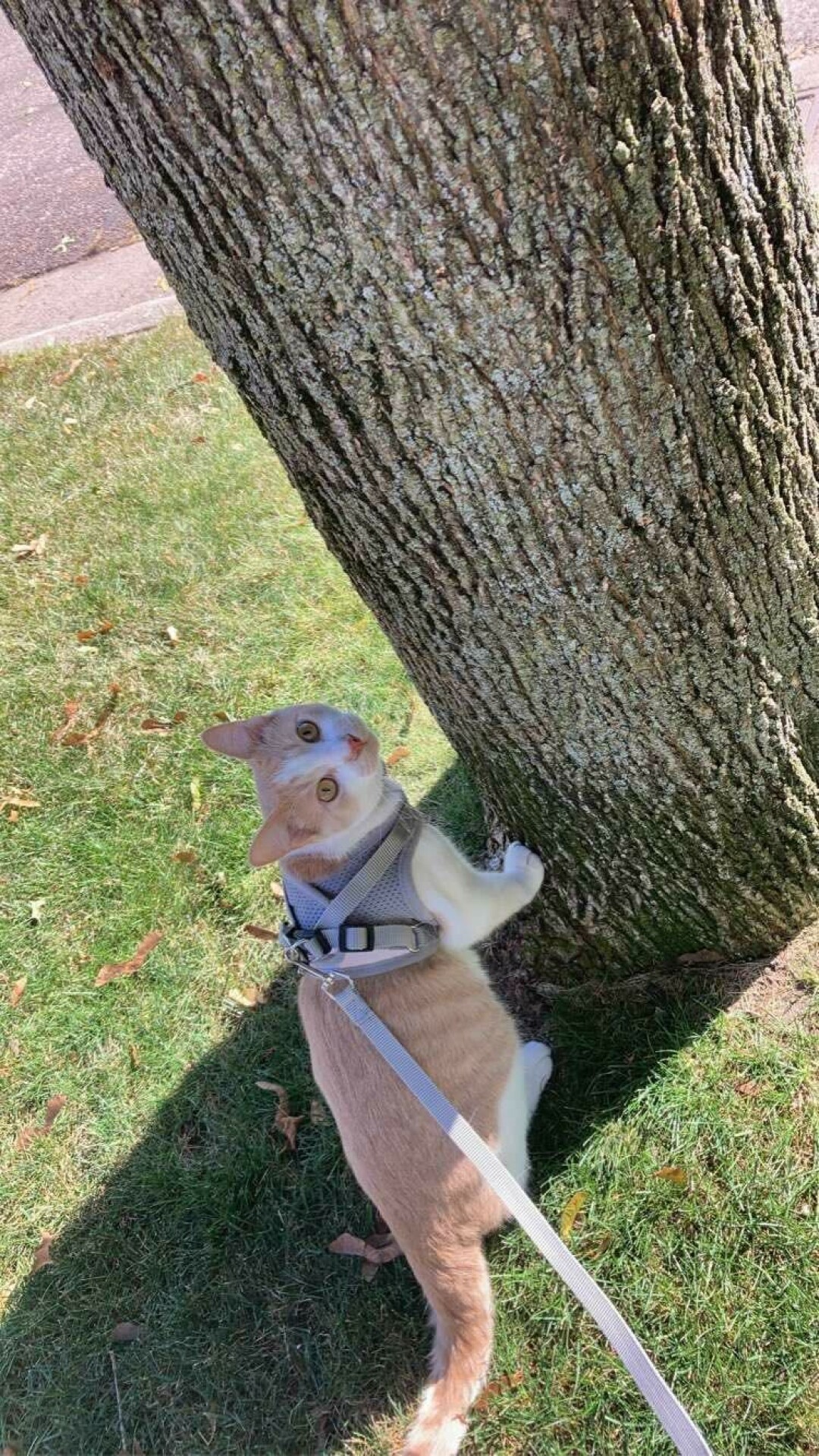Ready to Roll: Locals Leash Up Cats for a Stroll
cat-walking may seem like an odd trend, but it's good for feline health

If you’re a cat person, you may have noticed the latest bizarre, yet pawsitively purrfect trend in the world of our feline companions. Ladies and gentleman, may I introduce you to cat walking. You heard me right: taking your cat for a walk.
“You don’t walk the cat, the cat walks you,” said local cat walker Maddy Francis. “Wherever the cat wants to go, you’re going to follow it.” Francis has been walking her calico-tabby mix, Kira, for about a year and half, after noticing Kira was growing increasingly restless indoors at around six months of age. “Kira would call out to the birds and meow constantly to get outside, so I bought a harness,” Francis said. The first time Francis tried to walk her kitten, Kira enjoyed exploring, but became nervous from hearing loud noises, such as cars driving past. Francis gradually introduced Kira to her harness inside, then transitioned to her quiet backyard. Over time, Kira grew to love her weekly strolls.
“She loves being outside and chirping at the birds and chasing squirrels … (and) scratching at the trees like a scratching post,” Francis said.

Ali Barrie, by contrast, is a newbie to the cat-walking trend. She recently began training her seven-month-old American short hair, Otis, to go for walks.
“I feel like I’m teaching a toddler how to walk,” Barrie said. “There’s so many sounds, and sometimes he’ll just lay down. We’ve been doing incentives with treats and claps. If he can walk 20 feet without stopping, that’s really good.”
There are benefits to taking your cat outside for a weekly stroll, according to local vets, and many pet owners report positive effects. Although Barrie has only walked Otis for a few days now, she is already noticing improvements in his overall mood. Before, he was always looking for opportunities to get outside. Now, he waits at the door less often because he knows he will have his outdoor time.
“I think what we’ve been finding over the years, even with indoor cats, is that it’s very important to give them environmental stimulation, things that challenge their brain,” said Joan Schumacher, a veterinarian at Oakwood Hills Animal Hospital in Eau Claire. “That’s what you’re getting by taking these cats outdoors. I do think it makes them happier.”

Francis notes that after a walk, her feline Kira is “immediately relaxed and willingly to snuggle.”
According to Schumacher, adventurous cats respond best to walks, but there are alternatives if you want to take your cat outside.
“You might not actually be walking on a leash, but you’ve got your cat out enjoying the environment in an enclosed space, like a stroller or a backpack,” Schumacher said. “They’re like ‘Oh, look at the clouds, look at the sky, maybe I see a butterfly, maybe there’s a bug.’ They are so in-tune to the littlest of things that are moving out there. It’s very stimulating.”
Another local cat owner, Maddie Griffin, didn’t think walking her “skittish” tabby, Luna, would work very well, so she opted for a pet stroller instead, which she has been using since July.

“Yesterday, we were at a stop sign and this girl rolled down her window and was like, ‘Is that a cat? I love that!’ ” Griffin said. “A lot of people think she is a baby, and they do a double take and realize it’s a cat.”
Schumacher adds that safety plays a critical role when walking your beloved feline. She recommends using a well-fitting harness with a tight leash rather than a collar. She also recommends flea and tick protection for cats that go outside, as well as choosing a calm, quiet neighborhood for their explorations.
“With her harness,” Francis said, “I feel a lot safer knowing she can’t get away or harm the wildlife.”
Tips for taking your cat for a stroll:
- Use a well-fitting harness with a tight leash (not a collar).
- Use flea and tick protection.
- Choose a calm, quiet neighborhood.

